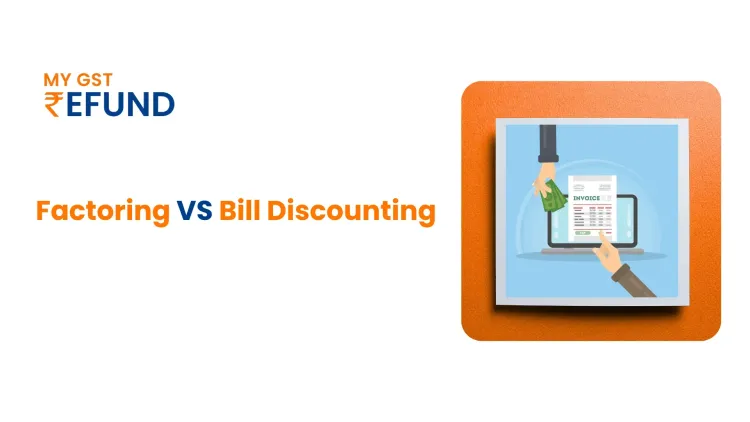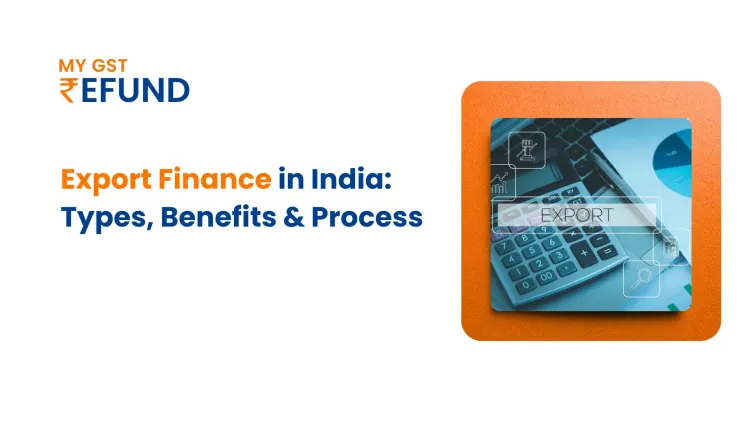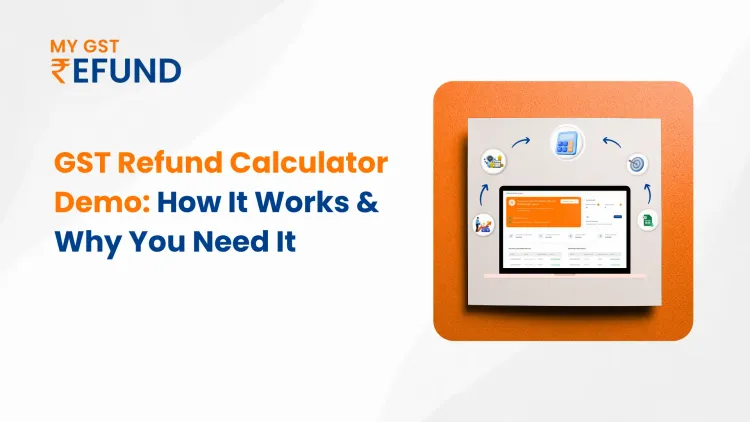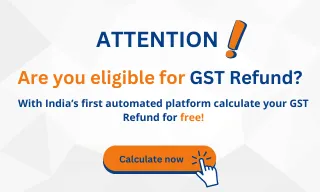GST Refund Process, Claim and Time Limit
Published on: Tue May 20 2025
Bio (Reveal/Hide)
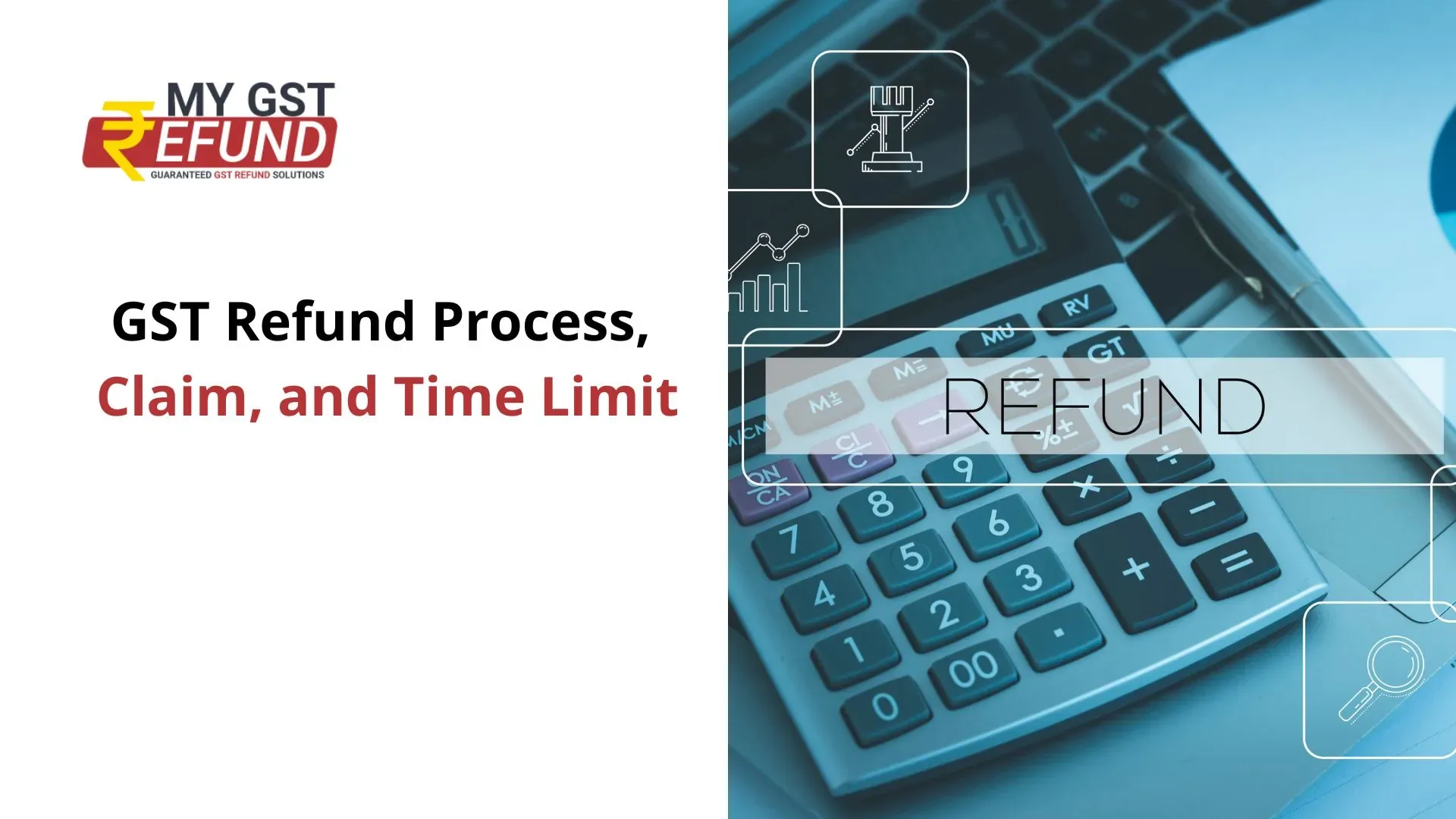
GST Refund Process
1. Eligibility Check
Purpose: Determine if you are eligible for a GST refund, typically applicable for overpaid tax or exports.
Key Point: Verify specific criteria for eligibility based on your situation.
2. Filing GST Returns
Purpose: Ensure all GST returns are accurately filed.
Key Point: The overpaid tax or input tax credit should be reflected in these returns.
3. Application for Refund
Procedure: Submit a refund application via the GST portal.
Forms & Details: Complete relevant forms, providing reasons for the refund such as excess payment or exports.
4. Document Submission
Requirement: Attach necessary supporting documents.
Examples: Include invoices, bank statements, and other relevant financial records.
5. Processing of Application
Action by Tax Authorities: Review and process your application.
Possible Requests: Authorities may ask for additional documents or clarifications.
6. Refund Sanction and Payment
Outcome: If approved, the refund is credited to your bank account.
Time Frame: Processing time can vary.
7. Audit and Assessment
Condition: In some cases, a detailed audit or assessment is conducted.
Purpose: To verify the accuracy and validity of the refund claim.
Additional Notes:
Variation by Jurisdiction: The specifics of this process can differ based on the country and its GST laws.
Professional Advice: It's advisable to consult with a tax professional or refer to the official GST portal for detailed guidance tailored to your specific situation.
Situations for Claiming GST Refund
1. Excess Payment of Tax
Scenario: Overpayment due to clerical or accounting errors.
Action: Claim refund for the excess amount paid.
2. Export of Goods or Services
Nature: Zero-rated supplies where exports are involved.
Eligibility: Entitled to claim the input tax credit.
3. Accumulation of Input Tax Credit (ITC)
Condition: Input tax credit on purchases is more than GST liability on sales.
Typical in: Industries with higher input GST rate than output GST rate.
4. Specific Entities (UN Agencies, Embassies, etc.)
Applicability: Special provisions for entities like UN bodies and embassies.
Process: Claim refund of tax paid.
5. Deemed Exports
Definition: Transactions considered as exports under specific conditions, despite not leaving the country.
Refund Eligibility: Subject to certain conditions.
6. Tourist Refund Scheme
Applicable to: Tourists purchasing goods to take out of the country.
Requirement: Fulfill criteria under the tourist refund scheme.
7. Finalisation of Provisional Assessment
Situation: When final tax liability is less than the provisional tax paid.
Refund: The excess amount can be claimed as a refund.
8. Orders by Judicial Bodies
Trigger: Judgement, decree, or order by appellate authority, tribunal, or court.
Outcome: Refund as ordered by these authorities.
9. Refund of Pre-deposit for Appeals
Context: Tax deposited for filing an appeal.
Condition: Applicable if the appeal is decided in favor of the appellant.
10. Supplies to Special Economic Zones (SEZs)
Participants: Suppliers to SEZ units or developers.
Refund: Eligible to claim GST refund.
11. Inverted Duty Structure
Occurrence: When input tax rate exceeds output tax rate.
Refund Claim: For the excess input tax credit.
Also Read :- GST Invoices: A Comprehensive Guide to Rules, Formats, Types and Revisions
Time Limit for Claiming GST Refund
Steps to Calculate GST Refund
1. Identify the Reason for Refund
Examples: Excess payment, export of goods/services, inverted duty structure, etc.
2. Calculate the Refundable Amount
Excess Payment: Difference between the GST paid and the GST liability.
Export of Goods/Services (Zero-rated Supplies):
Calculate the Input Tax Credit (ITC) attributable to the export.
Refund amount = ITC on goods/services exported.
3. Inverted Duty Structure:
Determine the ITC on inputs.
Calculate the GST on outward supplies.
Refund amount = ITC on inputs - GST on outward supplies, if ITC is greater.
3. Adjust for any Other Liabilities
Deduct any other tax liabilities or dues from the calculated refund amount.
4. Consider Relevant Caps or Limitations
Some jurisdictions may have caps or limits on the refund amount.
5. Apply for Refund
Submit the calculated refund amount with the required documentation in the GST portal or relevant authority.
Specific Scenarios
SEZ Supplies: Similar to exports, calculate ITC attributable to supplies made to SEZs.
Deemed Exports: Follow the guidelines provided for deemed exports.
Refund for UN Agencies/Embassies: Based on the tax paid on supplies to these entities.
Also Read :- GST Return Filing and New Regulations
FAQs on GST Refund
Q1: What is the process for submitting a GST refund application?
A1: The GST refund application is typically submitted electronically through the GST portal. You need to file the refund application in Form RFD-01, accompanied by relevant documents, such as invoices and proof of payment. The process may vary slightly depending on the specific type of refund claim.
Q2: How long does it take to receive a GST refund after application?
A2: The time taken to receive a GST refund can vary. Generally, the refund is processed within 60 days from the date of receipt of the application. If any deficiencies are noted, the applicant will be informed within 15 days of the application submission.
Q3: Are there any interest payments on delayed GST refunds?
A3: Yes, if the refund is not processed within the stipulated time frame (usually 60 days), the tax authorities are liable to pay interest on the refund amount. The interest rate varies depending on the jurisdiction.
Q4: Can a GST refund be denied, and what can be done in such cases?
A4: A GST refund can be denied if the application is incomplete, incorrect, or if the claim is ineligible. In such cases, the applicant is informed about the deficiencies or reasons for rejection. The applicant can resubmit the application after rectifying the issues or appeal against the decision as per the GST law.
Q5: What happens if there is an error in the GST refund application?
A5: If there are errors in the GST refund application, it will be marked as deficient, and the applicant will be given an opportunity to rectify the errors and resubmit the application within 15 days.
Q6: Is there a provision for a provisional refund under GST?
A6: Yes, in certain cases, such as exports, a provisional refund (up to 90% of the total refund claim) may be granted within 7 days of acknowledgment of the refund application.
Q7: Can input tax credit be refunded in cash under GST?
A7: No, the input tax credit under GST is generally not refunded in cash. It is credited to the electronic credit ledger of the taxpayer and can be utilized for future tax liabilities. However, in the case of zero-rated supplies or inverted duty structure, a refund may be claimed either as a tax credit or in cash.
Q8: Are there any special rules for GST refunds in special economic zones (SEZ)?
A8: Yes, supplies to SEZ units are treated as zero-rated, and businesses supplying to SEZs can claim a refund of the tax paid. The process involves filing a refund application with the necessary documentation to prove that the goods or services have been received by the SEZ.
Q9: Is there any time limit for issuing the Refund Order?
A9: Yes, the time limit for issuing a refund order is 60 days from the date of receipt of a completed application.
Q10: Has there been any relaxation due to COVID-19 in the timeline to file a GST refund?
A10: Yes, as per Notification 13/2022 dated July 5, 2022, the period from March 1, 2020, to February 28, 2022, has been excluded for computing the 2-year time limit for refund applications.
Q11: Can input on capital goods be claimed as a refund in the case of export supply?
A11: No, an exporter supplying without payment of taxes can only claim a refund of input and input services used in making such supplies, but not on capital goods.
Q12: What is the form on which one can file a refund claim?
A12: Refund claims can be filed using Form GST RFD-01.
Q13: Can I file a nil refund for multiple tax periods in one application?
A13: Yes, a refund for multiple tax periods can be filed in one application.
Q14: What are the cases under which one cannot claim utilized ITC?
A14: Utilised ITC cannot be claimed if the exported goods attract excise duty, or if the exporter has claimed duty drawback or refund of IGST paid on the exported goods.
Related Posts



